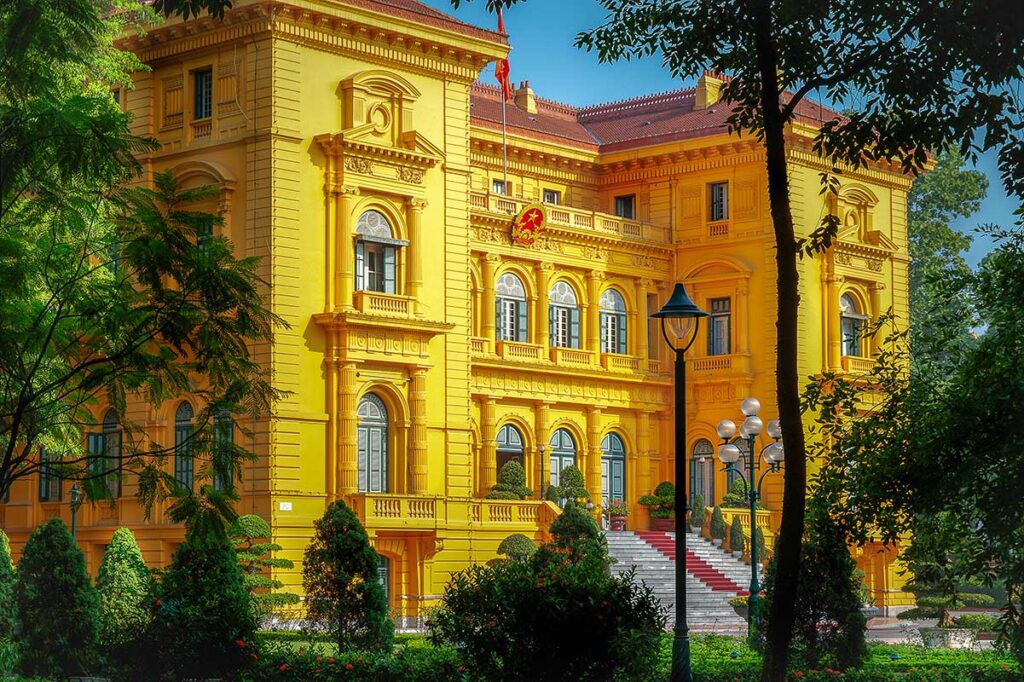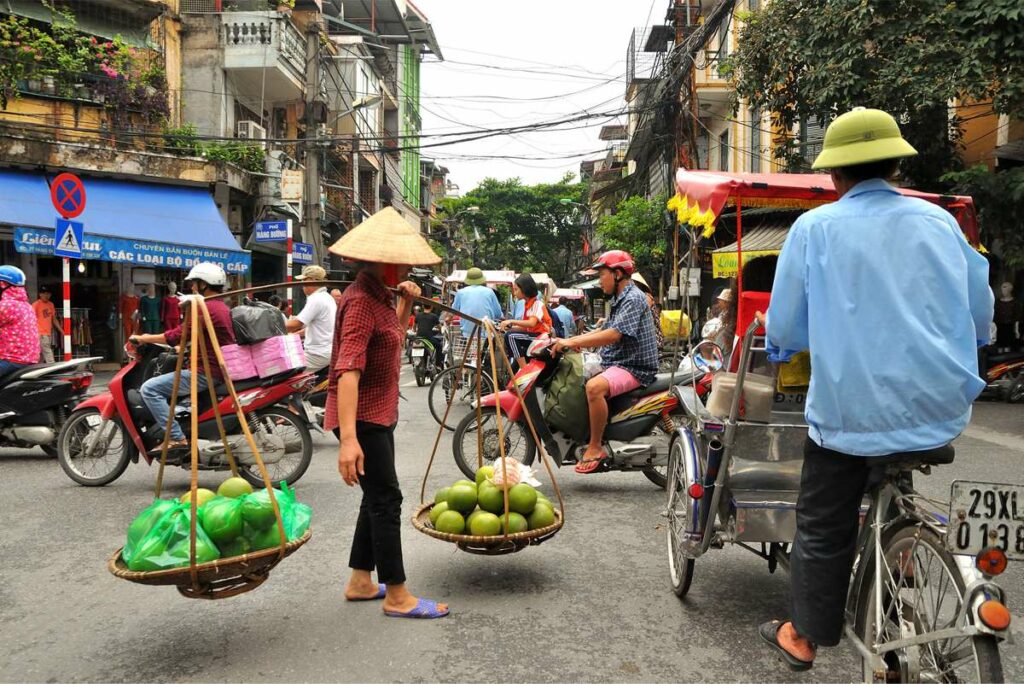What is the Hanoi Presidential Palace?
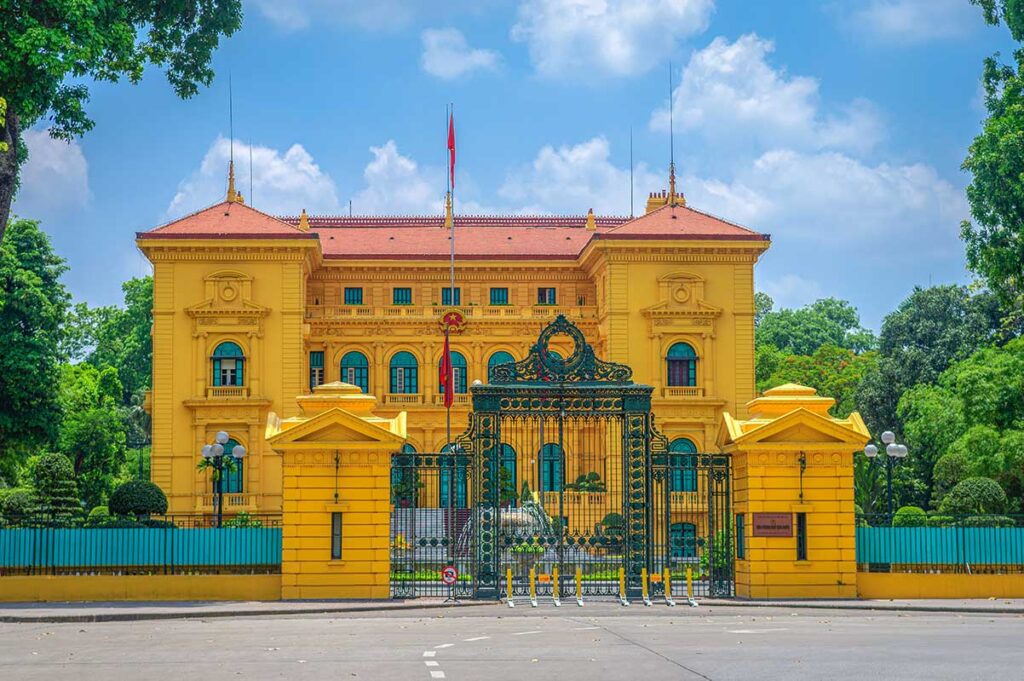
The Hanoi Presidential Palace is both a working government building and a historical site. It serves as the official residence of Vietnam’s president, though its main significance for visitors lies in its connection to President Ho Chi Minh. Built during the French colonial era, the palace stands out with its mustard-yellow European architecture, surrounded by gardens, orchards, and walkways.
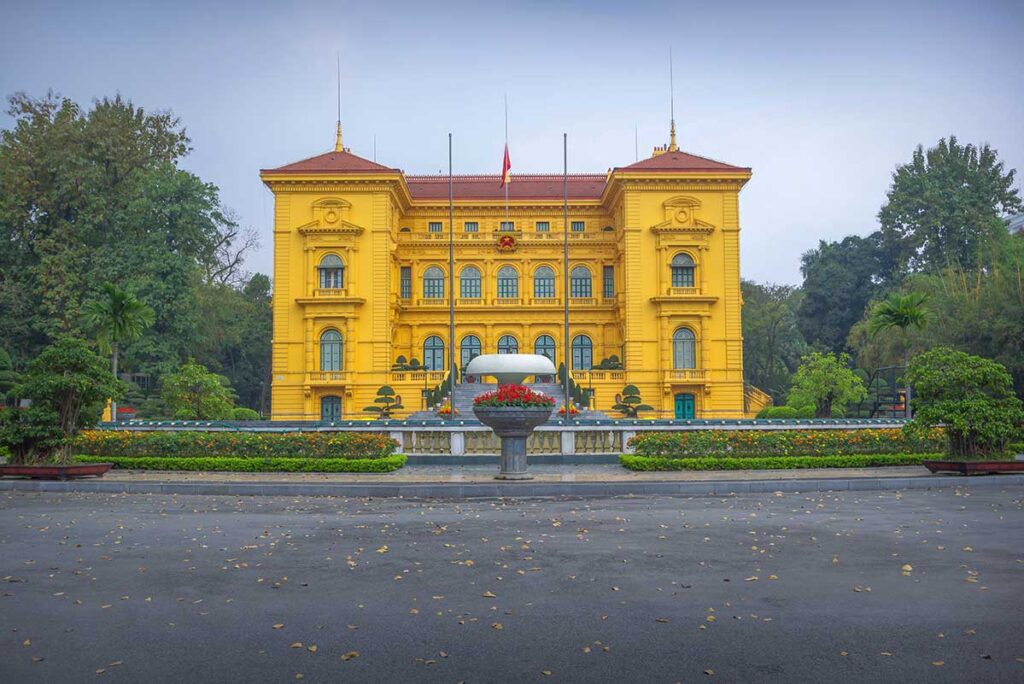
For travelers, it’s important to know that the palace itself is not open to the public. Instead, the attraction lies in exploring the grounds, which include Ho Chi Minh’s stilt house, his earlier residences, the fish pond, and tree-lined paths that formed part of his daily life. This mix of colonial grandeur and simple living spaces gives you a glimpse into both Vietnam’s political history and the modest lifestyle of its most famous leader.
History of the Presidential Palace
French Colonial Era
The Hanoi Presidential Palace was built between 1900 and 1906 by architect Charles Lichtenfelder, although it is often mistakenly credited to Auguste Henri Vildieu. It served as the residence of the Governor-General of Indochina, making it one of the most important colonial buildings in Hanoi at the time. Designed in a European Renaissance style, its grand yellow façade and symmetrical layout stand out as foreign in the Vietnamese landscape, with mango trees in the gardens being the only hint of local character.
Post-Independence & Ho Chi Minh
After Vietnam declared independence in 1954, the palace was intended to be the official residence of President Ho Chi Minh. However, Ho Chi Minh refused to live in such an opulent building while the country was recovering from war and poverty. Instead, he chose to stay in a simple stilt house on the grounds, reflecting his modest lifestyle. The palace was still used by him to host state guests and official receptions.
Modern Era
Following his death in 1969, the surrounding area was preserved as part of the Presidential Palace Historical Site, officially opened to the public in 1975. The complex was later recognized as a Special National Relic in 2009 for its historical and cultural value. Today, the palace itself remains closed to the public and functions as a venue for state meetings and welcoming foreign leaders, such as the high-profile meeting between Donald Trump and Kim Jong-un in 2019.
Highlights of visiting the Presidential Palace
While the palace itself is not open to visitors, the surrounding grounds form part of the Presidential Palace Historical Site and offer several places closely tied to Ho Chi Minh’s daily life. Exploring these areas gives you a more personal perspective on the country’s most important leader, in contrast to the imposing grandeur of the palace building.
1. The palace exterior
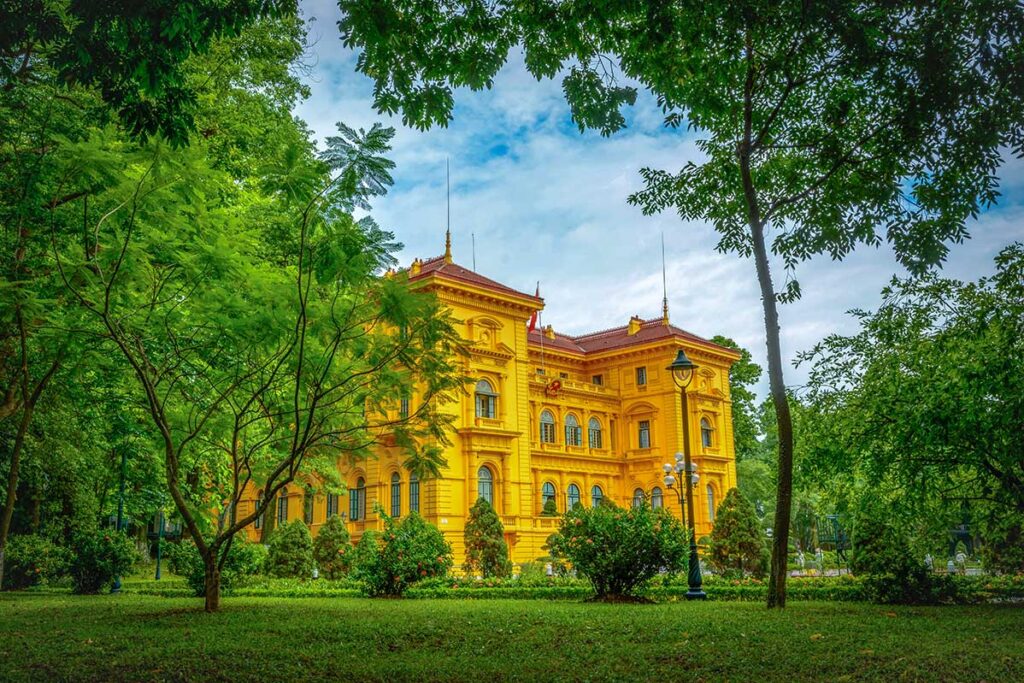
The French-built palace remains the centerpiece of the site, though visitors are not allowed inside. Photography from the front is restricted, so most views are from the side. Even at a distance, its scale and ornate design form a sharp contrast to the simpler houses nearby.
2. Ho Chi Minh’s Stilt House
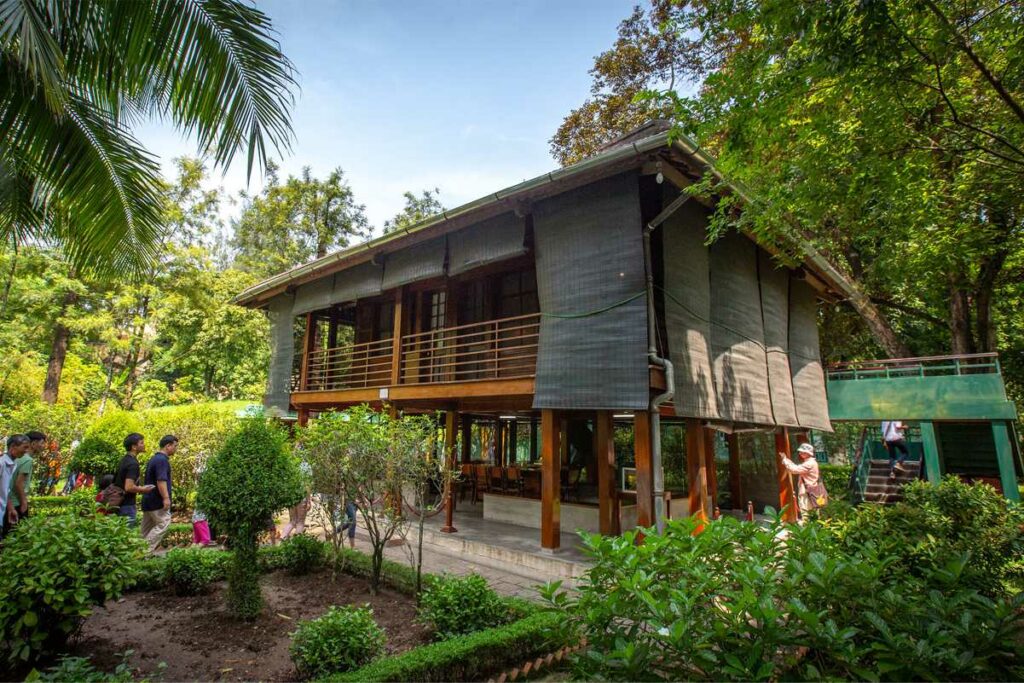
Built in 1958, this modest wooden stilt house became Ho Chi Minh’s home for the last 11 years of his life. It is a simple two-room structure furnished with only the essentials, reflecting his preference for modesty and practicality over luxury. Visitors often find the contrast between this humble house and the neighboring palace striking.
Read more about: Ho Chi Minh’s Stilt House
3. House No. 54
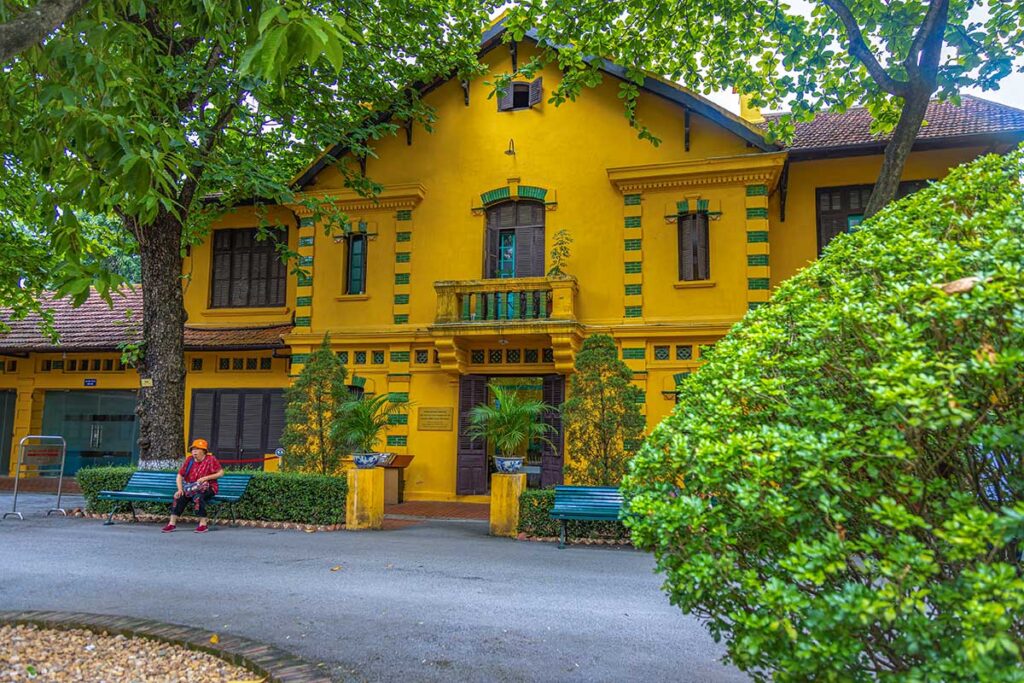
Before moving into the stilt house, Ho Chi Minh lived in House No. 54 from 1954 to 1958. The three-room building is preserved with his books, work documents, and gifts from international friends. Stepping inside offers a glimpse into the working environment of his early presidency.
4. House No. 67
Painted light blue, House No. 67 is where Ho Chi Minh worked during the final years of his life. It also became the place where he spent his last days and passed away in 1969. Inside, visitors can see military maps, a Zenith radio, and even a clock marking the exact time of his death—September 2, 1969, at 9:07 a.m.
5. Fish Pond
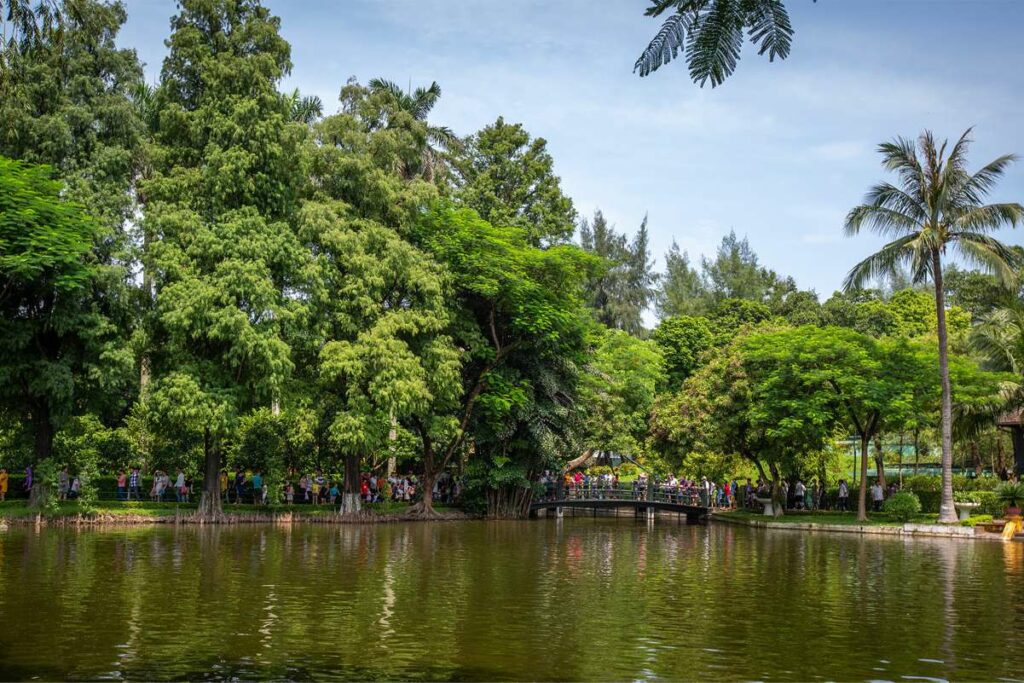
Near the stilt house lies a large carp pond, created under Ho Chi Minh’s direction. He personally fed the fish daily, and the pond remains one of the more peaceful corners of the site. It’s not just decorative but symbolic of his attachment to simple, rural traditions.
6. Mango Alley
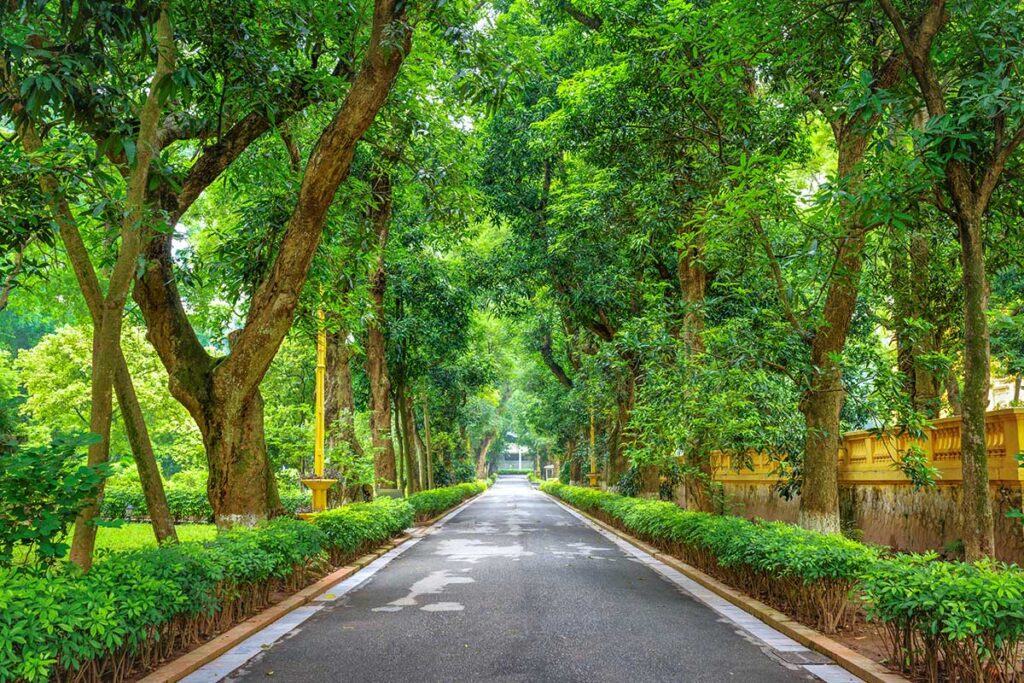
This tree-lined boulevard connects the palace grounds with Ho Chi Minh’s residences. Known as Mango Alley, it was his preferred spot for morning exercise and evening walks. Today, it’s a shady and pleasant path for visitors to follow through the complex.
7. Gardens & Grounds
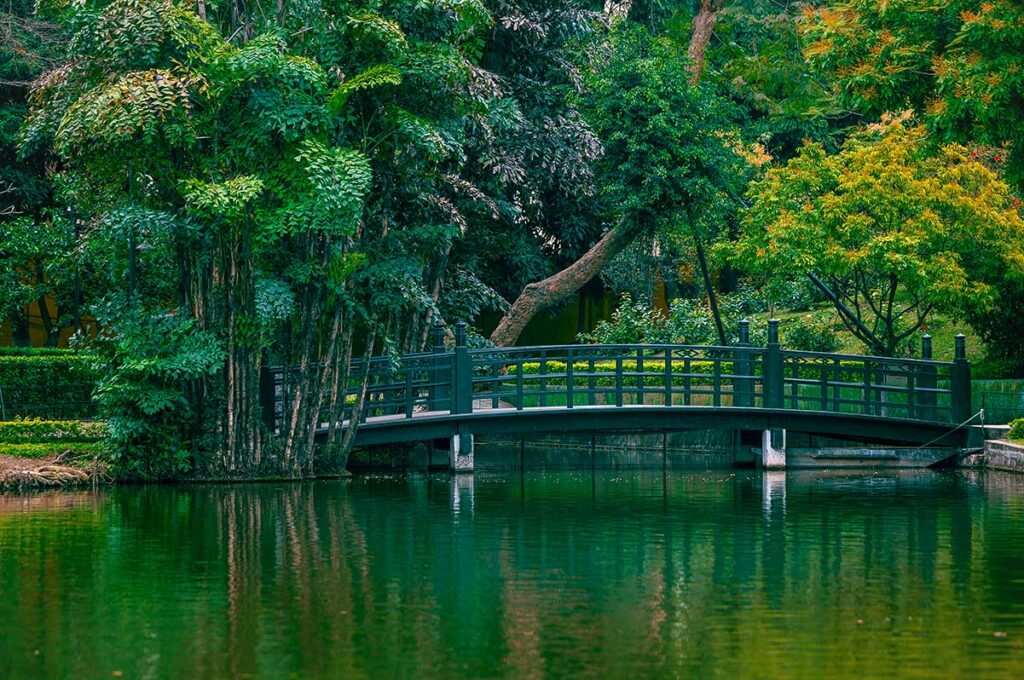
Covering about 10 hectares, the grounds surrounding the palace include orchards, commemorative trees, and carefully landscaped gardens. Fifty of the trees were planted by Ho Chi Minh himself, and some of his old cars are also displayed on-site. The atmosphere is surprisingly tranquil considering its central location in Hanoi.
Practical visitor information
Opening Times
- Summer (April–October): 7:30–11:00 & 13:30–16:00
- Winter (November–March): 8:00–11:00 & 13:30–16:00
- Closed on Monday and Friday afternoons.
Address & Location
The Presidential Palace Historical Site is located at No. 2 Hung Vuong Street, Ngoc Ha Ward, Ba Dinh District, right in the heart of Hanoi. It sits next to Ba Dinh Square and the Ho Chi Minh Mausoleum, making it easy to combine with other landmarks in the area.
Entrance Fee
- Free for Vietnamese citizens.
- 40,000 VND per ticket for foreigners (about $1.50).
- An optional audio guide is available for around 50,000 VND.
Dress Code
There is no strict dress code like at the mausoleum, but respectful clothing is expected. To avoid issues, it’s best not to wear shorts, mini-skirts, or sleeveless tops.
Facilities
Toilets are available inside the complex. Signage in English is limited, so a guide or audio guide can help make the visit more meaningful. Some visitors also note that the entry process can be confusing: you pass through security first and then buy your ticket further inside, which is not always clearly marked.
How to get there
Walking
The Presidential Palace is about a 15–20 minute walk from Hanoi’s Old Quarter, depending on where you start. The route passes several other landmarks, making it easy to combine with a visit to the Ho Chi Minh Mausoleum or One Pillar Pagoda.
Taxi / Grab
Using a taxi or Grab is the most convenient option, especially during Hanoi’s hot summer months or if you’re short on time. The ride from the Old Quarter usually takes less than 10 minutes and is inexpensive.
Public Bus
Several public buses stop near Ba Dinh Square, including routes 09, 22, 45, and 50. This is the cheapest way to get there, though it’s not the most common choice for foreign visitors unless you’re traveling on a very tight budget.
Nearby sights
The Presidential Palace sits in the Ba Dinh area, which is packed with important landmarks. Many can be visited in the same outing.
Directly next door:
- Ho Chi Minh Mausoleum – The final resting place of Ho Chi Minh, with strict visiting hours and dress code.
- One Pillar Pagoda – Small but iconic Buddhist pagoda built on a single stone pillar.
- Ho Chi Minh Museum – A modern museum covering the life and legacy of Ho Chi Minh.
Within about 1 km (10–15 minute walk):
- Tran Quoc Pagoda – Hanoi’s oldest pagoda, located on West Lake.
- Quan Thanh Temple – A Taoist temple dedicated to Tran Vu, protector of the North.
- West Lake – Hanoi’s largest lake, good for a stroll or café stop.
- B-52 Lake – A small lake with the wreckage of a downed American B-52 bomber.
Is the Hanoi Presidential Palace worth visiting?
On its own, the Hanoi Presidential Palace is not the kind of landmark that justifies a special trip. The palace itself cannot be entered, and photo opportunities of the exterior are limited. What makes the visit worthwhile are the grounds: Ho Chi Minh’s stilt house, his earlier residences, the fish pond, and the shaded gardens all give a personal glimpse into his life.
If you’re already exploring Ba Dinh Square — with the Mausoleum, One Pillar Pagoda, and Ho Chi Minh Museum just steps away — the palace grounds fit naturally into your itinerary. Think of it as a meaningful stop within a larger half-day of sightseeing, rather than a destination on its own.
